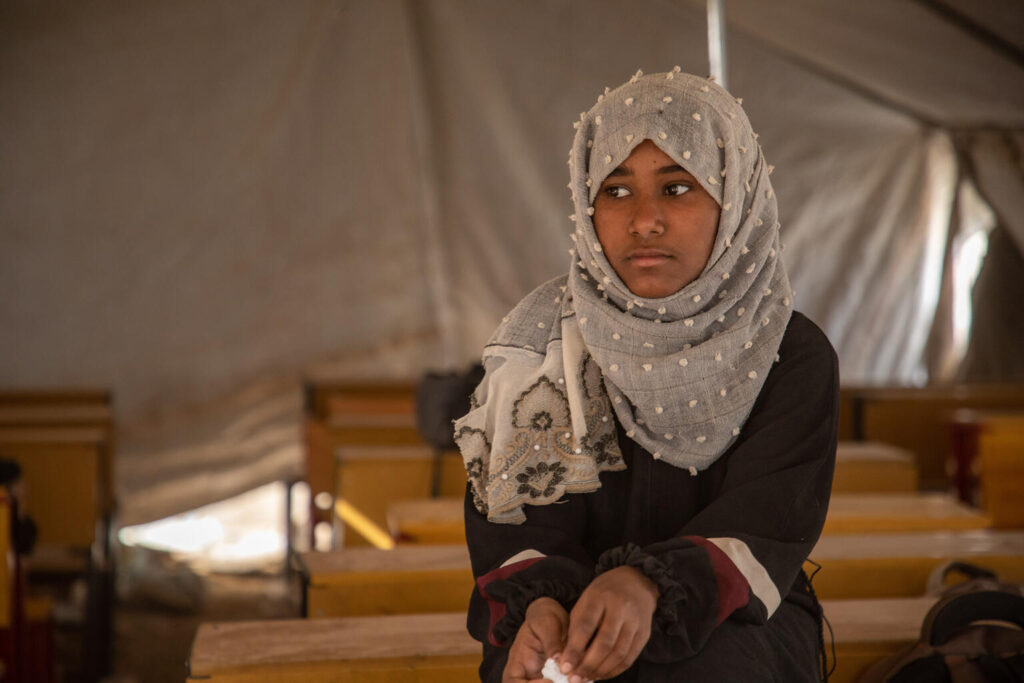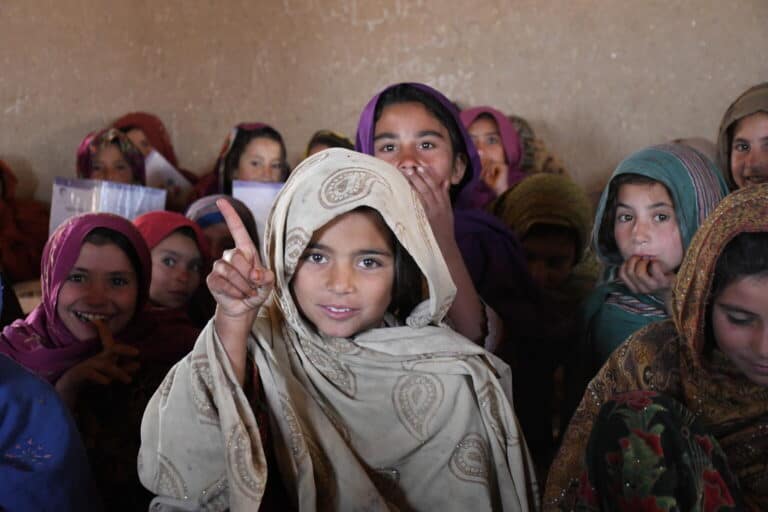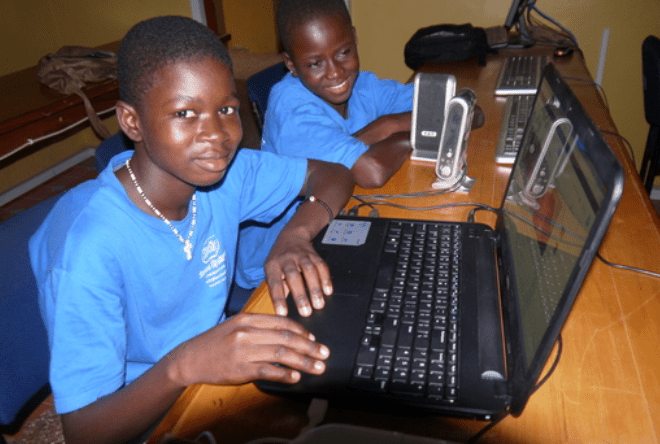After her school was hit by a missile, 13-year-old Emtinan of Al Hudaydah stopped going to school for an entire year. Her family took shelter in a neighboring village, before being forced to flee again as intensive conflict resumed in the governorate. Ultimately, they sought shelter in Al-Jufainah internally displaced persons (IDPs) camp in Marib Governorate, Yemen. She is pictured here sitting inside her class tent in March 2021, as the COVID-19 pandemic upended the lives and educations of children around the world.
Today marks the fourth International Day of Education. This year’s theme, “Changing Course, Transforming Education,” calls for the most important transformations that must be nurtured to ensure that all children can enjoy their right to education. These efforts are particularly relevant for internally displaced and migrant children. While children in all countries and from all backgrounds have seen their education affected by the COVID-19 pandemic, those who have been internally displaced – or forced from home within their countries’ borders – are now more vulnerable than ever of missing out on an education. These children are in urgent need of transformative measures to ensure their right to learn is upheld.
Even before the pandemic, children forced to leave their home because of conflict, violence, disasters or climate change were often the furthest behind in terms of access to quality education. Around the world, approximately 13 million children of primary and early secondary school age are living in internal displacement, many concentrated in sub-Saharan Africa. Millions of these children are at high risk of being out of school. Yet their plight remains largely invisible due to insufficient data, resources and support.
Their education is often interrupted by displacement itself, as children leave their habitual school behind and may need time to register in a new school in the host community, or as schools serve as emergency shelters for displaced people. School records or personal identification may be lost as a families move, resulting in registration complications. But education is most deeply affected by the displacement’s impact on families’ financial resources. Displaced families may no longer be able to afford school fees, transportation or school materials for their children. Children who work to help support their families may face responsibilities that limit their time for school.
Psychosocial trauma linked with displacement or with the event that triggered it, whether a conflict or a disaster, can also shift childrens’abilities to concentrate in class and lead to lower educational achievement levels and higher drop-out rates. Language barriers, cultural differences and discrimination are additional obstacles on internally displaced children’s path to education.
Despite their great vulnerability, internally displaced and migrant children and their specific educational needs are often left out of national educational policies and humanitarian response plans. Comprehensive information on their education is difficult to come by, as assessments of their needs are rare and do not follow standard approaches, thus making it difficult to identify trends across time and contexts. Data on internal displacement are rarely able to reflect the specific barriers to education, which will vary by context; a child’s age, gender or disability status; and a family’s income, educational level and other sociodemographic characteristics. These challenges are often compounded by fears displaced and migrant communities have with sharing information with governments if legal protections for their status and protection are not well established.
Promising developments are underway to drive the needed data and evidence to shape policymaking and programming that protect internally displaced children. Launched in 2020, the International Data Alliance for Children on the Move (IDAC) leverages the power of data to meet the protection and development needs of migrant and displaced children through a coalition that unites national statistical offices, multilateral agencies, non-governmental organizations, think tanks and academics. In its April 2021 Issue Brief, for example, IDAC highlighted how the pandemic was aggravating the schooling needs of internally displaced children, calling for education strategies for continued learning for all children – including internally displaced children — and the need to make schools safe, healthy and inclusive environments.
An IDAC-dedicated working group on internally displaced children, led by the Internal Displacement Monitoring Centre (IDMC), is leveraging IDAC members’ diverse expertise and experiences to shed light on the specific needs of internally displaced children and support them through better data. IDMC has started collecting standard information on internally displaced children’s access to education, with results disaggregated by age, sex, disability status, ethnolinguistic identity and their parents’ income group and educational level. Another working group member, UNESCO, is developing the Global Data Portal on Education in Emergencies (EiE), which aims to curate and standardise data on EiE, including internally displaced children. UNESCO is also collaborating with partners to strengthen institutional education information systems for data-driven EiE and resilience to crises in Ethiopia and South Sudan. The project, in close alignment with the Inter-Agency Network for Education in Emergencies (INEE)’ recently launched Reference Group, aims to drive reforms and set global data standards. Finally, UNICEF, the largest child rights organization that supports millions of IDP and migrant children access education globally, is strengthening monitoring and data systems for children on the move and is actively supporting initiatives via both UNESCO and INEE. Its support to countries like India demonstrates how better data improves education planning to expand learning opportunities to scores of migrant children previously excluded from education and learning.
With these steps, IDAC and its partners are making concerted efforts to raise awareness of the urgent need for better data and greater support to ensure that all children living in internal displacement can exercise their right to quality education and contribute to a more sustainable, inclusive and peaceful future.
Become an advocate for quality education for internally displaced children! Write us at IDAC@unicef.org, copied to elajom@unicef.org and christelle.cazabat@idmc.ch.


